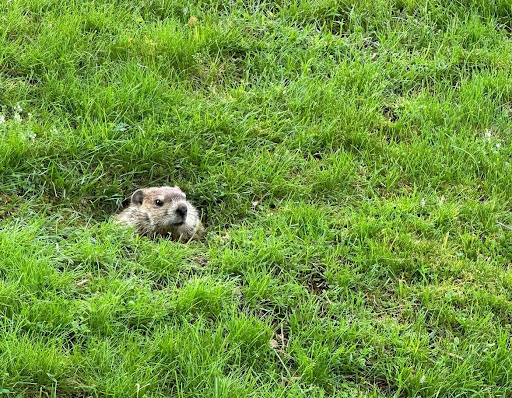
Fall is officially underway on campus, and you may have noticed a few non-human activities going on under your nose. Along with the groundhogs we all know and love, squirrels, skunks, bunnies, bats, and perhaps a fox or two are making more frequent appearances. As campus grows colder, these critters draw closer and closer to the warmth of the dorms.
The skunks are moving into more densely populated areas as their pre-winter scavenging drive picks up, mostly on Fountain Avenue, funnily enough. Give them a wide berth. You don’t want to be one of the careless Fountain-goers who gets sprayed. Skunks have excellent senses of smell and hearing, so chances are they’ll know you’re near them before you’re aware of their presence. But they won’t move out of the way, so if you get too close, that’s on you.
Yes, campus has a few bats. Yes, they carry rabies. Yes, if you wake up with a bat in your room, you need to go to the doctor immediately.
Now, the pièce de résistance: the groundhogs. Known to northern New Englanders as woodchucks, groundhogs should really be the University mascot, given the number of groundhog and Groundhog-Day-themed parties thrown here. Their scientific name, Marmota monax, derives from a northeastern Native American word for digger. These little landscapers create burrows around two- to six-feet deep and sometimes as long as fifty feet, with multiple underground chambers for storage, waste, and sleeping. They spend most of their day grazing on dandelions, clovers, and grasses (or scrounging around our composts). If you peek into a hole during the daytime, you may see one sleeping in the entrance, as they like to soak up the sun as much as possible, even when they’re in hiding.
Groundhogs will make their dens closer and closer to the buildings as winter approaches, even burrowing under the foundations. The groundhogs have been slowly chipping away at the foundation of the Public Safety building for the past few years. They have one of the largest warrens on campus under there. Attempts have been made around Russell House to live-trap and capture the groundhogs, but few have been caught. While most might imagine that groundhogs are stuck on (or below) the ground, they’re also strong swimmers. If you’ve seen any in trees, no, they’re not evolving into their squirrel relatives; climbing is a common behavior. They’re likely trying to hide from you. Sit quietly in WildWes, behind the College of the Environment, or between the Nicolson and Hewitt dorms, and one might wander close to you. The groundhogs are also highly territorial, which is why you won’t see them together much, except for during mating season in the spring. You may have seen one charge a bunny or a squirrel—groundhogs are the alphas of the rodent world on campus and quite literally hog the food resources.
If you were on campus last spring, you may remember the baby groundhogs, which were possibly the cutest creatures to ever grace University grounds. Many of those babies are likely the groundhogs that you see roaming around campus today, as they don’t migrate far from their sites of birth. Groundhogs mate at about two years of age and give birth to litters of three to five. They only live for three to five years. In late spring, head to WestCo to search for new batches of baby groundhogs.
You may have been trying to interact with the groundhogs—not a great idea. Right now they’re too busy fattening up for winter to pay much notice to us, but if you get close they’ll likely run away. The spring babies are the most touchable, but please don’t touch them. You don’t want to get bitten, and we don’t want the groundhogs getting too used to people. That’s how they get hit by cars and bikes.
Groundhogs are one of the few rodents in the Northeast that undergo true hibernation, completely sleeping through the winter months, dropping their body temperature and metabolism and living off their fat reserves until spring. Males usually emerge from hibernation before females, which is why Punxsatawney Phil isn’t Punxsatawney Phyllis (and, of course, we live in a patriarchal society).
We live in hog heaven: But why is the University such a perfect place for groundhogs and other rodents and mammals? Well, if you think about it, we are a hog’s garden of Eden, complete with compost and food scraps, rowdy students scaring away predators, warm buildings to burrow under, and plenty of well-kept gardens for them to dig up. They’re adorable, but also a landscaping nuisance.
Enjoy the rodent life while it lasts; only squirrel and bunny tracks will be seen on the snowy campus fields.
Nell Brayton can be reached at nbrayton@wesleyan.edu.


Leave a Reply